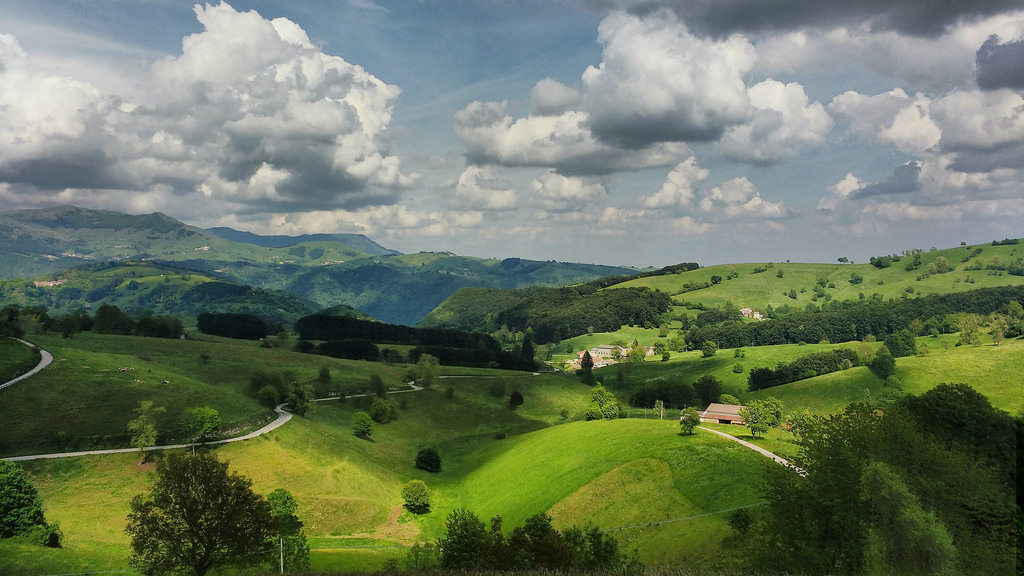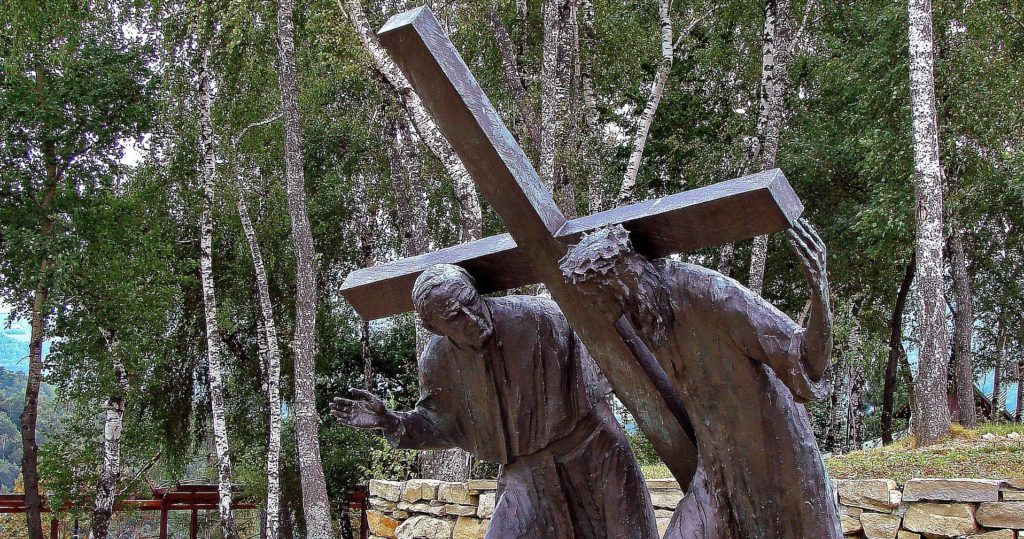
Introduction
How the Bible Actually Works makes clear that there is no one right way to read the Bible. Moving us beyond the damaging idea that “being right” is the most important measure of faith, Peter Enns—evangelical Bible scholar and host of "The Bible for Normal People" podcast—offers a freeing approach to Bible study that helps us focus on pursuing enlightenment and building our relationship with God—which is exactly what the Bible was designed to do.
Controversial evangelical Bible scholar, popular blogger and podcast host of The Bible for Normal People, and author of The Bible Tells Me So and The Sin of Certainty explains that the Bible is not an instruction manual or rule book but a powerful learning tool that nurtures our spiritual growth by refusing to provide us with easy answers but instead forces us to acquire wisdom.
For many Christians, the Bible is a how-to manual filled with literal truths about belief that must be strictly followed. But the Bible is not static, Peter Enns argues. It does not hold easy answers to the perplexing questions and issues that confront us in our daily lives. Rather, the Bible is a dynamic instrument for study that not only offers an abundance of insights but provokes us to find our own answers to spiritual questions, cultivating God’s wisdom within us.
“The Bible becomes a confusing mess when we expect it to function as a rulebook for faith. But when we allow the Bible to determine our expectations, we see that Wisdom, not answers, is the Bible’s true subject matter,” writes Enns.
This distinction, he points out, is important because when we come to the Bible expecting it to be a textbook intended by God to give us unwavering certainty about our faith, we are actually creating problems for ourselves. The Bible, in other words, really isn’t the problem; having the wrong expectation is what interferes with our reading.
Rather than considering the Bible as an ancient book weighed down with problems, flaws, and contradictions that must be defended by modern readers, Enns offers a vision of the holy scriptures as an inspired and empowering resource to help us better understand how to live as a person of faith today.
* * * * * * * * * * * *

“How the Bible Actually Works”:
A Response to Geoff Holsclaw (And Likely Others)
https://peteenns.com/how-the-bible-actually-works-works-a-response-to-geoff-holsclaw-and-likely-others/
by Pete Enns, Ph.D.
https://peteenns.com/how-the-bible-actually-works-works-a-response-to-geoff-holsclaw-and-likely-others/
by Pete Enns, Ph.D.
[any brackets are mine. - re slater]
*Peter Enns (Ph.D., Harvard University) is Abram S. Clemens professor of biblical studies at Eastern University in St. Davids, Pennsylvania. He has written numerous books, including The Bible Tells Me So, The Sin of Certainty, and How the Bible Actually Works. Tweets at @peteenns.
Introduction
I would like to thank Geoff Holsclaw for taking the time to write a review of my latest book How the Bible Actually Works. The review appears in two parts. Part 1 covers the book’s contents, and I want to commend Holsclaw’s efforts there. He did a very good job summarizing the ground that I cover, and I don’t take that for granted. Too often critical reviews falter on this very point. In Part 2 Holsclaw lays out his disagreements with some of the central conclusions that I draw the book, and it is here that I will focus my comments.
It should be apparent that my response is roughly twice the length of Holsclaw’s review. I felt the review was burdened by numerous theological assertions with unexamined subtexts beneath them that needed to be teased out a bit. Also, Holsclaw’s views no doubt mirror those of other Evangelicals, and so I am hoping that by going into a bit more detail I might address nuances that others might have.
The Whole Thing in Two Paragraphs
Holsclaw is fine in principle with the idea of biblical writers reimagining God for their time and place, which is a key theme in my book. He is also comfortable agreeing that the Bible contains tensions and contradictions. However, Holsclaw is a pastor and theologian, and as such he feels that I as a biblical scholar do not go far enough in affirming the revelatory nature of Scripture. As a consequence, God is left out of the picture, which is theologically inadequate and pastorally detrimental.
In response, I feel that Holsclaw makes some points that could generate brisk discussion, but on the whole, his theological and pastoral critique of the book raises more theological and practical questions than they answer[JB1]. At numerous points, Holsclaw makes theological assertions that open themselves up to serious scrutiny. A substantive theological and pastoral engagement with the phenomena of Scripture will have to do better than what we see here in this review.
Speaking as a Theologian and Pastor
From the very beginning of the review and continuing at a steady clip throughout, Holsclaw clearly wants to drive home the fact that he is a pastor and a theologian. His response to HTBAW is, he tells us, informed by what he feels those vocations require, namely keeping ever before us the revelatory nature of Scripture wherein God “speaks.”
To illustrate, after affirming my language of reimagining God, Holsclaw immediately adds, “But what exactly has God revealed to us (to ask a theologian’s question) and what does it mean for us (to ask a pastor’s question)? “
I have to admit, this rhetoric put me on guard. In my experience, I too often hear Evangelical critics in particular claiming this higher ground as if, in and of itself, holding such constitutes an argument, which it doesn’t (see below). I find that tactic distracting, if not off-putting, and creates more clutter than clarity. Indeed, a fair amount of my response stems from a need to address this problem.
It is not the case, as Holsclaw presents the matter, that he is bringing to the table theological and pastoral concerns and I am not. We are just driven by different theological and pastoral concerns. My writing, including HTBAW, has been affirmed by plenty [of congregational, lay, and theological sources] with theological training. And many pastors have told me they are thrilled with HTBAW, are using it in their congregations, and have invited me to come speak to their churches and even synods.
I only (reluctantly) raise the point to remind us, and Holsclaw, that appealing to his vocations does not validate his critique. Knowing that he is a pastor and theologian is not particularly revealing. More pertinent to the discussion is knowing what kind of theologian and pastor he is.
Holsclaw’s theological turf and notions of pastoral duty are not standards, simply givens in the discussion, but are as subject to criticism as any other. And while the angle he is taking on the phenomena of Scripture will be satisfying theologically and pastorally to some, to others, who have perhaps heard these answers before, it will not [be]. They have other questions entirely. I have been conversing for many years with pilgrims who are trying to recover spiritually from their conservative backgrounds and find other perspectives life-giving. They would not be as captivated by the particular kind of theological and pastoral matters Holsclaw keeps pressing.
To illustrate further, near the end of his review Holsclaw summarizes succinctly his theological and pastoral concerns with my view of Scripture:
"Theologically, if God has spoken then we can and should engage in theology, the task of asking who God is, what God is like, and how all this connects with all that is. If God has not spoken then all we have is cultural anthropology, an ancient text, university research projects, and the projection of human values onto divine fantasies."
"Pastorally, if God has spoken then we are not alone, abandoned within the angst of a life where all meaning, purpose, and significance is really just up to us. If God has spoken then there really is something stable and reliable in the world. If God has spoken that [sic] life isn’t just up to me to figure out. If God hasn’t spoken, then pastorally my advice is to sleep in and skip my next sermon and don’t worry about that daily devotion time anymore. [italics my emphasis]"
Holsclaw’s rhetoric here is overblown, and the conclusions raise some blazing theological and pastoral red flags for me.
First, note that Holsclaw has not actually answered his own question “Has God Spoken?” He has only expressed what he thinks is at stake if God has or hasn’t spoken. I’ve never warmed up to this kind of “if-then” theological argument—that position X must be false, since it undermines some imagined necessary outcome Y. This is not an argument one can respond to—because it is not an argument but an expression of a belief that is not subject to discussion. Expressing one’s beliefs is fine under other circumstances, but as a counterpoint, it is not at all persuasive.
Second, my experience yields the exact opposite observation. I know people—many people—whose spiritual lives are, or have been, in a process of deep recovery because of the unyielding theological categories their intelligence and their experience could no longer support, but who were told by pastors and theologians that their faith depends on their ignoring their experience and falling back on the very formulations that fueled their crisis to begin with. They have found greater explanatory power, and therefore renewed faith, through other models.
Holsclaw’s theological models of Scripture and pastoral care out of which he critiques HTBAW are not universal. He is welcome to have them, but as a point of theological debate, they will carry no weight. We are left to trading anecdotes.
Losing the God Connection.
Holsclaw’s pastoral and theological concerns are focused almost entirely on one issue: my failure to say something about divine revelation in addition to the biblical authors reimagining God. As he puts it, I have “totally left aside” that issue and even “refuse” to address it. In doing so, I have “turned the Bible into what humans reimagine God to be,” which is nothing less than a “lie in the big picture.”
That last bit of unguarded hyperbole notwithstanding, Holsclaw’s assessment of my work is a product of the kind of theology he embraces. There are, after all, as I’m sure he knows, different theological models for understanding the nature of revelation. I wish Holsclaw had taken some time to define—even briefly—what he means by “revelation,” given its importance to Holsclaw, and how that view helps address the phenomena of Scripture.
Judging from the review as a whole, however, I am confident that Holsclaw’s view fits comfortably within familiar Evangelical parameters. I also surmise, though Holsclaw does not use the term, that his deeper concern is to protect biblical authority (a clear subtext of his two summary statements quoted in the previous section), which is the logical corollary to his understanding of revelation.
Holsclaw is correct that I don’t address directly the matter of revelation. And the reason is that it simply doesn’t hold for me the level of theological and pastoral interest it does for Holsclaw. Nor does it need to.
Oh sure, it “interests” me as a topic of lively speculative discussion or my own internal musings. In fact, truth be told, I “imagine” all the time what revelation might mean and how it might work. I even wrote a book about it in 2005, Inspiration and Incarnation where I adopt an incarnational model as a means of framing the discussion.
But as for HTBAW, I simply had no interest in meshing together what I see the biblical writers doing with what God might be doing to them, or in them, or with them, or alongside them. This was no oversight on my part, nor was it a “refusal” to address a central topic of theological and pastoral urgency.
I truly hope we can all agree that any doctrine of revelation is by its nature speculative and hard to demonstrate when push comes to shove. I am well within my theological and pastoral charge to work through the biblical phenomena (as best as I can, always looking out for my own hidden agenda) and describe what I see from a cultural point of view without also accounting for how all this fits together in the mind of God who was revealing information to the biblical writers and then to us.
It is clear that Holsclaw sees this failure of mine as the heart and soul of his critique, but I simply don’t feel the force of it. I do not accept Holsclaw’s presumption that divine revelation is a non-negotiable, even self-evident, norm by which the phenomena of Scripture need to be viewed.
I might, though . . . were he to demonstrate how the messy phenomena of Scripture (which he acknowledges) would inform and shape his doctrine of Scripture rather than be adjusted by it. Or perhaps, were he to indicate how his doctrine of revelation does a better job of accounting for the biblical phenomena I lay out in the book, such as:
- contradictory portrayals of God,
- the many conflicts between the law codes in Torah though they are all given by God in Mt. Sinai to Moses,
- the conflicting histories of Israel’s kings, various and sundry moral and historical problems,
- the unexpected nature of the Messiah dying for others and then rising
- —and more.
I’m sure Holsclaw acknowledges these phenomena, but he is obligated at this point not simply to talk the talk but walk the walk, to explain how inserting a doctrine of revelation into this discussion would actually add to our understanding of the biblical phenomena—an explanation that would certainly penetrate deeper than the “if-then” scenarios he posed above.
But what concerned me most—if I may say, for both theological and pastoral reasons—was Holsclaw’s unguarded rhetoric in the following:
"Emphasizing the process of “reimagining God” might sound like a way to save the Bible from fundamentalism, to loosen the stranglehold of literalism and absolutism, and to appreciate the diversity within the Bible. And those are good things."
But without a doctrine of Scripture/revelation (a theologian’s question) we haven’t really saved our connection with God (a pastor’s question). [my emphasis - PE]
In other words, however correct it might be to think of the Bible as an ancient, ambiguous, and diverse collection of stories that represent how people of old reimagined God for their here and now, without a doctrine of Scripture/revelation our connection with God is not “saved,” or to put it more directly, that connection is lost.
I hope Holsclaw is just aiming for a bit of drama here, but at face value, this claim is unsettling and illustrates a type of biblio-centrism for which Evangelicalism is rightly criticized. Evangelicals tend to walk that thin line between respect for Scripture and idolizing it. If Holsclaw has not crossed that line, for me he is coming too close for comfort.
Let me say succinctly, that a doctrine of revelation does not save our connection with God. That is what the Spirit of God does working in and through Scripture (along with other means of grace) without the false sense of security offered by any “doctrine of revelation.” I truly hope Holsclaw doesn’t think the people of God need a functional definition of revelation in order for the Spirit to meet us. I can think of not a few Christian traditions that wouldn’t quite know how to respond constructively to a claim like that.
I happen to love the Bible and I think of it as, among other things, a non-negotiable “means of grace” that gives me language, concepts, and a touchstone for articulating my experience of Christ. And for the record, I at least acknowledge in HTBAW the Spirit’s presence and involvement in Scripture, even if only in a general sense. In several places in the book, I say that Scripture’s antiquity, ambiguity, and diversity are not problems to be solved but reflect God’s “design” and as such God’s invitation to us to walk the path of wisdom.
God is not “lost” because I do not fold into my view the mysterious inner-workings of revelation. God just shows up in, with, though (whatever) the human reflections of the biblical authors as we approach the text in our full humanity. Of course, I can’t demonstrate how that works (!) or prove that I am right (!), but that is where I see Scripture itself pointing. I do not see Scripture pointing to an overarching “doctrine of revelation.”
Holsclaw acknowledges these same pointers (that biblical authors do reimagine God), but how does he see those pointers pointing him to add a notion of revelation? Or has he already freighted a discussion of the biblical phenomena with a preconceived notion of what Scripture as God’s word must be? I am reminded here of C. S. Lewis’s quip in Reflections on the Psalms:
"[There] is one argument [about the nature of Scripture] which we should beware of using [when trying to define the nature of Scripture]: God must have done what is best, this is best, therefore God has done this. For we are mortals and do not know what is best for us, and it is dangerous to prescribe what God must have done–especially when we cannot, for the life of us, see that He has after all done it."
Along those lines, I suppose I should throw another card on the table: I am very comfortable with, and am comforted by, the paradox of Scripture noted by others long before HTBAW: Scripture as God’s word comes to us irrevocably through utterly ordinary means—and that fact has pressing implications for how we frame the nature of Scripture.
Over the years I’ve collected quotes from theologians and others that articulate this paradox. One of my favorites is the following by turn-of-the-century Dutch Calvinist theologian Herman Bavinck from his Reformed Dogmatics:
"[How we think of Scripture] is the working out and application of the central fact of revelation: the incarnation of the Word. The Word has become flesh, and the word has become Scripture; these two facts do not only run parallel but are most intimately connected. Christ became flesh, a servant, without form or comeliness, the most despised of human beings; he descended to the nethermost parts of the earth and became obedient even to death on the cross. So also the word, the revelation of God, entered the world of creatureliness, the life and history of humanity, in all the human forms of dream and vision, of investigation and reflection, right down into that which is humanly weak and despised and ignoble…. All this took place in order that the excellency of the power…of Scripture, may be God’s and not ours."
Bavinck, working with what can rightly be called an incarnational model of Scripture (as Christ the Word is human/divine, so too is the Bible “human/divine”). He sees the Bible’s through-and-through messy, broken, frail form as precisely what brings us to “connect” with God–the very thing Holsclaw is so fearful of losing. It is the very “humility of Scripture” that gives us glimpses of what God is like—a God who “in coming vulnerably into creation [in Jesus] . . . is not giving up the characteristics of divinity but most fully manifesting them” (William Placher, Narratives of a Vulnerable God). By speaking of Scripture in terms of the reimagining God as a wisdom quest, I am simply attempting to catch, as I see it, something of Scripture’s humility and God’s vulnerability.
Bavink is hardly a liberal who has lost his moorings. His thoughts here, as well as those of others I have come across, have been helpful to me theologically and pastorally. And yet none of these views represents the final word (no theology can claim that). I have some quibbles and disagreements with all of them, including the quote above—not the least of which is my annoyance that these authors do not always follow through with the implications of their insights.
Nevertheless, the kind of doctrine of Scripture Bavinck articulates here thoroughly revels in Scripture’s “humility” and incorporates that humility positively into his doctrine of Scripture rather than tacking on a notion of revelation from who knows where.
At the very least the paradox of Scripture should temper Holsclaw’s theological/pastoral claim that, though I may have “saved the Bible” from fundamentalism, I have done so while “losing God.” No . . . only if your God is bound to a particular formulation of a doctrine of Scripture that keeps its humility at a distance. And of course, Holsclaw can disagree with all this, but that is not the end of the discussion; it is only the beginning.
Nothing New to See Here
Early in his review, Holsclaw reminds us (as pastor and theologian) that struggling with Scripture is not a recent invention in the history of the church, and as a general observation, he is absolutely correct. I am less optimistic, however, about where he goes with this observation:
"So as a pastor and a theologian, I want to say, “Welcome to all you tired and weary, and you who need rest from a disappointing, constrictive, and confusing view of the Bible. Come out of your narrow fundamentalism, not into a loss of faith, but into a wider faith, a broad Church tradition that has honestly grappled with these issues for two millennia. [Emphasis original]"
To be sure, the history of Christian interpretation on the whole has much to offer Evangelicals struggling with Scripture through the hermeneutical lens they inherited from the Protestant Reformation. I have seen time and time again how simply being exposed to the rich and diverse history of pre-Reformation interpretation is a breath of fresh air for many who are “tired and weary.”
On the other hand, Holsclaw’s sentiment here strikes me as too sweepingly generous and uncritical an assessment of the “broad Church tradition.”
I often see appeals to what is also called the “Great Tradition,” especially among Evangelicals who, for instance, have discovered Orthodoxy as a promising way out of the problems that plague Evangelicalism. And let me say again that serious students of Scripture should avail themselves of the breadth of Christian thought, if anything to learn how to de-center their own theologies.
But I do not think that the “broad Church tradition” has done quite so good or complete a job of “honestly grappling with these issues for two millennia” as Holsclaw seems to intimate. There are many issues today that the Church has not grappled with at all, and not all its grappling has been necessarily helpful, or (to state the obvious) achieved any sort of unanimity.
Holsclaw seems to be telling his worried readers simply to join the club, for the answers to their questions eventually are found therein. I hope that’s not what he is saying. If all he is saying is that the broad Church tradition welcomes deep and honest discussion that could potentially redirect, adjust, or even reform our thinking, even on such key points as the nature of revelation, then perhaps there is a place even for HTBAW at that table.
The grapplings with Scripture throughout the history of the church are culturally shaped iterations of Christian thought. Theologians of the 2nd through 4th centuries, for example, were reimagining the God of old through the lens of the philosophical heritage of Greco-Romanism. And I would expect nothing else—this was their world. But it is not ours.
To be in conversation with that profound past is simply good common sense, and as I said rewarding and even life-giving for some, but that does not relieve us of the responsibility–what I call in the book our “sacred responsibility”–of also doing theology here and now, which might mean having to put things differently when addressing the unique challenges of our day. Saying so is not a dismissal of earlier voices but a commitment to owning our own.
I don’t see the “broad Church tradition” being a place where our questions can safely come to rest. Rather it challenges is to face the inevitability of accepting this “sacred responsibility” as well.
If a Claim is Trans-historical Does that Make it Revelation?
In the section entitled “Staking a Claim, not Reimagining One,” Holsclaw asserts that, as revelation, the Bible “drives some stakes in the ground beyond the right now of culturally engaged wisdom informed reimagining.” He supports this claim by citing John 1:1 and 14 of John’s prologue and Hebrews 1:1-3.
Holsclaw rightly states the John 1:1 is a reimagining of Genesis 1, and v. 14 of the tabernacle. He also acknowledges that John’s act of reimagining God reflects the “here and now of a contingently cultural moment.” This is promising, but he adds quickly that these culturally conditioned acts of reimagining God nevertheless “transcend history,” meaning there is something more happening here than John merely reimagining. God must be revealing something somehow in addition to this act of reimagining.
I am not at all sure how one can acknowledge the human act of reimagining as also an act of revelation. Explaining that would take a lot of fleshing out. But more to my point here, I am puzzled why Holsclaw thinks that John’s trans-historical claim necessarily indicates divine revelation.
For one thing, the very heart of John’s trans-historical utterance lies in his dependence on Neo-Platonism’s notion of the transcendent logos (“word”). John’s trans-historical claim about Jesus is more than tangentially a product of his time and place.
Of course, John sees Jesus as that logos, but on what basis can Holsclaw say with such confidence that this claim can only come to John through direct divine revelation? Rather, John might simply be applying the language of the divine logos to Jesus to express his Christian faith in that “contingently cultural moment.”
John’s unique twist is that this logos “became flesh and lived among us” (John 1:14). But did this come to him through revelation? John is not the first Christian writer to claim that Jesus is “God with us.” That notion came to him from antecedent Christian tradition, did it not?
I am not at all clear why Holsclaw would think that a trans-historical claim is a mark of revelation. We see for example in the religious literature of the Second Temple Period, particularly the Pseudepigrapha, all sorts of trans-historical claims. Are these trans-historical claims also necessary indications of divine revelation? Or what about such claims made by every religion of the ancient Mediterranean going back three millennia or so? Or does this hold only in the Bible?
I’m not saying that the Spirit of God is absent in John’s prologue. All I’m saying is that we have no idea what role the Spirit plays. This is one reason why I have leaned toward an “incarnational” model of inspiration: it allows for mystery without feeling the pressure of fleshing that out (pardon the pun), and it does not try to do a theological circumnavigation of historically rooted explanations for why the Bible does what it does.
Rather than trying to resolve in my book what is hardly self-evident—what exactly God is “doing” as the Gospel writer is writing. I am more than content to respect my limitations without thinking I have to get into God’s head first. Echoing Bavinck, for a doctrine of Scripture to have any explanatory power, anthropological explanations for biblical phenomena need to be given their due weight, not suppressed, or—as I feel Holsclaw is doing—given lip service to.
The same objection holds for Holsclaw’s use of Hebrews 1:1-3. He makes much of the fact that this writer says that God “spoke” first through the prophets and now “by his Son.” And so, if I am catching Holsclaw’s meaning, such “speaking” by God is by its nature revelatory and therefore not simply an act of human imagination.
It is worth noting, though, that by speaking “by his Son,” God’s speech is a person, not the Bible, the latter containing diverse interpretations of the Son. But more important, as with John 1, it is not at all clear to me why this statement must be seen as a propositional revelation of God rather than, say, as with John’s appropriation of the logos, an act of the writers “sanctified imagination” for his time and place. I would like Holsclaw to articulate, even briefly, why Heb 1:1-3 can be nothing other than a demonstration of God’s direct propositional revelation.
Holsclaw overestimates the implications of these passages when he asserts that they “make trans-historical claims about Jesus, claims that transcend the merely human process of re-imagining God.” He is free to believe that, but not assert it as a given, nor treat the absence of such a claim elsewhere as a failing.
Reimagining God—But Not Too Much
At more than one point, Holsclaw acknowledges (with qualifications) the value of accepting our “sacred responsibility” to reimagine God, just so long as it is not done in a “one-sided” fashion. Similarly, he does not “necessarily disagree” that I use the language or reimagination to explain inconsistencies in the biblical portrayals of God, or that the history of Christian theology is really successive projects of reimagining the God of the Bible further still.
What Holsclaw seems to mean is that this sacred responsibility to reimagine God must be balanced, so to speak, by the higher controlling notion of biblical revelation. I would contend, however, that by phrasing the problem this way, Holsclaw is revealing that he has not really taken to heart the problematic nature of the biblical phenomena that the language of “reimagining” is trying to address.
I don’t think grafting “revelation” onto the biblical phenomena balances anything. I am reminded here of the analogous situation of how Evangelical theology has sometimes handled evolution vis-à-vis the creation of Adam in Genesis 2. I have often heard confident claims that there is no real tension between evolution and the Bible—provided we retain a “historical Adam,” which I’ve always felt was an exercise in missing the point. I do not think that one can simply pin the evolutionary tail onto the Evangelical donkey.
Likewise: contradictions and historical conundrums of the Bible don’t really affect an Evangelical bibliology—provided we manage to retain the language of revelation, inspiration, and authority (often further freighted with the language of inerrancy). I do not think the biblical phenomena can be so easily squared with the terminology that Holsclaw wants to keep, not without some careful reframing of those concepts, which Holsclaw does not do. As I asked earlier, how might “revelation” help us with the very contradictions in Scripture Holsclaw affirms?
At any rate, Holsclaw’s affirmation of the language of reimagination seems to have a ceiling:
". . .our ‘sacred responsibility’ isn’t just to continue the reimagining process, but to faithfully witness to these realities as if they are true for the whole world, all of reality."
But to bear faithful witness is precisely to accept the sacred responsibility of reimagining God, because bearing witness always has a context, is always particularized in time and space, including in the Bible.
“Faithful” does not mean following a theological abstraction. In fact, even in those passages, Holsclaw adduces above, I am seeing the revelation of the mystery of Christ, i.e., Christ is the mystery that is revealed. Faithfully witnessing to this paradoxical “revealed mystery” requires embracing our sacred responsibility to imagine how the Spirit is active among us.
The question before us is What will faithful witness-bearing look like here and now? How will that witness be articulated as “true for the whole world” as Holsclaw puts it? Working toward that end is precisely why “sacred responsibility” is not a theological liability but a theological and spiritual necessity—not to mention simply unavoidable.
And My Last Point
The review ends as follows:
"Conservatives focus too much on revelation. And Progressives focus too much on wisdom (and/or love). What we need is both. Only then will the church grow up into all maturity in Christ by the power of the Spirit to the glory of the Father. (my emphasis)"
I disagree. To repeat my earlier point—conservatives don’t focus too much on revelation but on particular models of revelation. Progressives don’t jettison revelation but conceive of it differently. I don’t think combining somehow conservative and progressive ingredients will solve the problem since they are operating from very different theological starting points. We can’t just duct tape the two together.
I don’t think that either [evangelical - res] theologians or biblicists have a better handle on truth than the other. But if I may put yet another card on the table, I believe Holsclaw and others who would champion this kind of theology and pastoral care, will need to reframe, recalibrate—reimagine—how we think of revelation given the rather complex and messy nature of Scripture from a historical point of view.
Doing that well is how I believe “the church [will] grow up into all maturity in Christ by the power of the Spirit to the glory of the Father.”
I appreciate the exchange here and I am grateful for Holsclaw taking the time to engage my book. But in my estimation, the theology of Scripture out of which he critiques How the Bible Actually Works is not the theological and pastoral corrective he poses it to be….






















